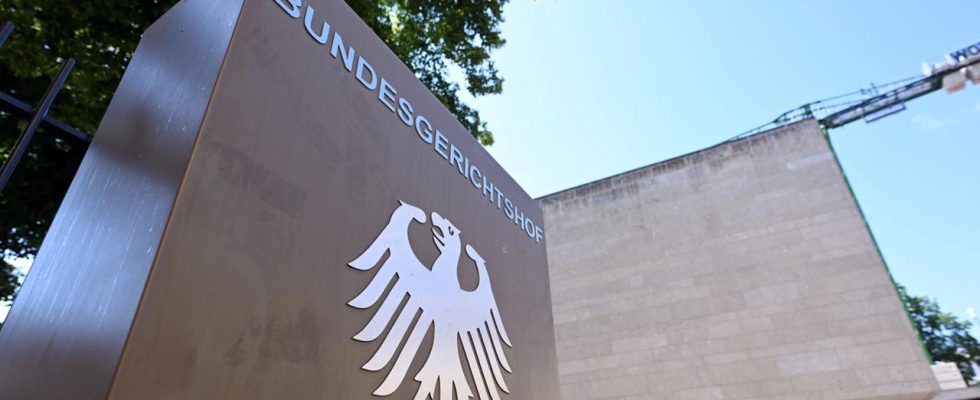An art collector wanted to have the entry of one of his paintings deleted from a database for Nazi-looted art. He complained through the instances up to the Federal Court of Justice – without success.
The turbulent sea off Calabria can be seen in the painting “Calabrian Coast”. And the story of the picture is just as moving. The Jewish art dealer Max Stern sold the picture in 1937 – shortly before he had to give up his gallery in Düsseldorf and was able to flee to Canada in time to escape Nazi persecution.
Today, a Canadian trust manages Max Stern’s estate. According to the Trust, he had to sell the painting “Calabrian Coast” due to persecution – i.e. under duress. For this reason, the painting by the 19th-century artist Andreas Achenbach has been listed in a database for Nazi-looted art since 2016.
In 1999, an art collector from Baden-Baden bought the “Calabrian Coast” in London. He wants the picture to be deleted from the “Lost Art Database” and sued against the listing. With the entry in the database “a flaw is attached” to the picture, as a result of which it is practically unsaleable, said lawyer Dr. Wendt Nassall, who represented the collector before the Federal Constitutional Court (BGH).
Many works of art from the Nazi era in private ownership
Many thousands of works of art were stolen from their Jewish owners during the Nazi era or had to be sold by them under duress. Many of these works of art are still privately owned in Germany.
However, claims for return are regularly time-barred. Nor are private owners bound by the so-called Washington Principles. They want to find a just and fair solution for the victims of National Socialism or their heirs. Public museums must therefore clarify the origin of Nazi-looted art. Private collectors only have to check if they want to sell a work.
“Lost Art Database” is intended to enable fair solutions
The “Lost Art Database” offers help for the heirs of the victims of National Socialism. This database is operated by the German Lost Art Foundation, based in Magdeburg. Works of art are listed here for which there is a plausible assumption that they were confiscated from their mostly Jewish owners during the Nazi era. The database contains around 180,000 works of art.
“The ‘Lost Art Database’ aims to bring together current owners of works of art and previous owners or their descendants,” explains Professor Gilbert Lupfer, head of the Lost Art Foundation. “The ‘Lost Art Database’ goes back to the Washington Principles of 1998. A number of countries, including the Federal Republic of Germany, undertook to intensify the search for so-called Nazi loot and to make databases available for this purpose.”
Database names historical facts
The collector has no claim against the trust that administers Max Stern’s estate. That is the ruling of the Federal Court of Justice today. His property is not affected. Neither the search report in the database nor the Interpol search for the picture constitute a claim of ownership by the trust, according to the chairman of the Fifth Civil Senate, Dr. Bettina Brueckner. The entry in the database only says that Max Stern was the owner of the picture during the Nazi era. Also that he was persecuted as a Jew when he sold the picture. The database makes no statement about who legally owns the picture today.
Only incorrect statements in the database could lead to claims of the current owner for deletion. However, the trust made “true statements of fact” about the painting, said Judge Bettina Brückner. The former owner Max Stern is to be regarded as the former owner. “His individual Nazi persecution is obvious and is not questioned by the plaintiff collector,” said the BGH judge at the verdict.
Due to the historical circumstances of the sale in 1937, it is assumed on the basis of the Cultural Property Protection Act that the painting was confiscated as a result of Nazi persecution. So far there is no evidence that the sale of the picture did not take place under pressure from the persecution.
The interest in the history of the picture prevails
The BGH says: The “Lost Art Database” only makes public what is known about the sale of the picture during the Nazi era. The picture is practically no longer for sale because of the entry in the database. However, the current owner has to accept the spread of unfavorable facts because they are “true facts” about Nazi history. According to the highest German civil court, the interest of the descendants of Nazi victims and of the public in knowing exactly whether a work of art was confiscated as a result of persecution outweighs possible sales interests.
With its judgment, the Federal Court of Justice strengthens the rights of descendants of Nazi victims when searching for Nazi-looted art. However, the BGH has expressly not decided whether private collectors may have claims for deletion against the “Lost Art Database” themselves. Only Max Stern’s trust in Canada was sued and not the database of the Lost Art Foundation in Magdeburg.
File number: V ZR 112/22

